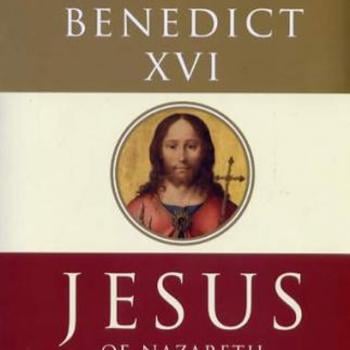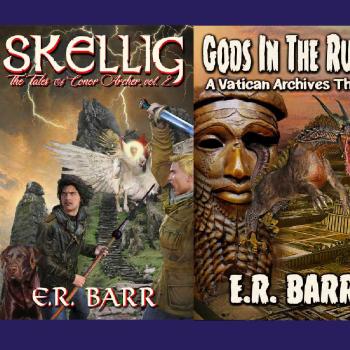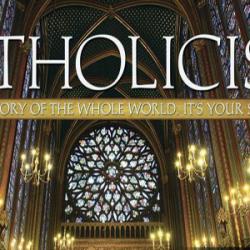
Hello Dali!!!
Hello, Dali!!! On this Feast of the Ascension, it is worth looking at one of the most intriguing and vibrant paintings of the Ascension. But before we see what a masterpiece Dali has created, we ought to look at the Ascension itself. Only in the past several years, have I really understood the Ascension as perhaps the central dogma of our faith. Why do I say this? Well think about it. How do we have any contact with the Saving Event of 2000 years ago that Christ accomplished? Is it all just a memory? Can we only tell stories? Or can we experience it? The Ascension says, “You can experience the Christ Event now, and here’s how:”
What Is The Ascension?
- The Ascension continues the Cross/Resurrection Event. We say in the Creed, “He ascended into heaven and is seated at the right hand of the Father.” What in the world does that mean? Well it doesn’t mean a golden throne in the sky. Instead, it means the Father saw what the Son did on the Cross and said, “Yes! I approve of what you have done.” And then he raises the Son from the dead. Then comes the Ascension which is nothing less than God continuing to say “Yes!” to the work of his Son. Being seated at the right hand of the Father means Jesus continues to save and give life. The Crucifixion/Resurrection Event didn’t end at Calvary or in the Empty Tomb. It continues even now.
- That means we can be a part of it and should be a part of it in the here and now. Our faith is not otherworldly. It is sunk in the midst of living and we discover Christ is present here. He is not simply in heaven.
- Catholics are often mocked because they are seen by some Protestants as not ‘born again’. But in truth, because of the everlasting nature of the Cross/Resurrection Event which continues because of the Ascension, Catholics can experience being saved, being ‘born again’, any time they like, if they can be in contact with that everlasting Salvation Event.
- The Ascension allows that to happen through the Sacraments, particularly the Eucharist. Whenever we celebrate the Eucharist, heaven and earth are united, and we can touch that everlasting Salvation Event. We can be at Calvary, we can be at the empty tomb, we can even be at the Ascension, all because the Ascension provides access to something that happened 2000 years ago and continues to happen today. How cool is that!
- Catholics have to remember that when they receive Christ in the Eucharist they are neither cannibals, nor are they eating the Body and Blood of Christ who simply died on the Cross. No! They are eating the Body and Blood, Soul and Divinity of the Crucified/Resurrected Christ in his glorified Ascended Body. It’s a ‘now’ event, not a past event. That’s why Sr. Mary Presumptuous was wrong when she said if you bite the host, Christ will bleed. The Romans were wrong when they said we were cannibals. The Ascension gives us Christ, very real, but in a glorified Body and Blood way. It gives us Jesus as he is now. That’s why Salvation is a present event for us and we can partake of it any time we wish. It’s how we actually touch God, commune with the Divine. Good for the Protestants that they are born again, but that only happens to them once. We Catholics and Eastern Orthodox can experience Salvation as part of the regular cycle of our lives.
What Does Dali Have To Do With The Ascension?
And now we come to that wonderful, bizarre, magical, mystical, and prescient Salvador Dali who painted four major paintings of Jesus, all of them having the crucifixion present in them. But interestingly enough, he always presents the crucifixions as in the process of ascending. We are concerned with the last one he did called The Ascension: Pieta. I maintain that Dali had an artists understanding of what was said about the Ascension above.
The Ascension: Pieta–What The Art Critics Say
Art critics generally agree:
- The feet of Christ lead the viewer to the figure of Christ ascending into a nucleus. Based on the timeline, 1950 vision-1958 completion of painting, the round yellow disc can represent an atom, a nucleus of a cell, or the sun with its attendant sunflower, or a representation of life itself. Dali was heavily influenced by the nuclear atom as would be expected because of the nuclear arms race at that time. However, according to Dali, this nucleus is the “true representation of the unifying nature of Christ.”
- The feet are soiled. They would be the last things for a disciple to see in the Ascension and represent the walking with disciples done by the Lord on earth.
- Dali’s wife, Gala, is the model for the Blessed Virgin Mary who is weeping.
- The Holy Spirit is represented by a dove.
The Ascension: Pieta–Some Additional Thoughts
Everyone must make an interpretation of the painting, so I will add these thoughts.
- This is a crucified Christ ascending, once again, as in the other crucifixions he painted, without wounds. This ties in with the title of the painting: Ascension: Pieta. However, it is a look at suffering in a different way. All of Dali’s crucifixions are without wounds. That means they are representations of how the crucifixion should be viewed in light of the resurrection and ascension.
- Christ’s outstretched hands are powerfully flexing as if in a struggle or battle with evil.
- The background to the hands is a violent tableaux of red clouds or explosions representing the evil he faced on the Cross and the evil still present in the world. For Dali, perhaps, this was nuclear evil.
- The Virgin Mary is weeping because she sees the suffering of the world and the continued battle her Son wages to defeat the remnants of evil. I believe Dali intended the Pieta or suffering aspect of this painting to show the ambiguity of a Christian’s life. A Christian by belief in Christ has won the victory but is still in the midst of the forces of evil who vainly but destructively still try to defeat Christ. Hope comes from the fact that Christ still battles in our stead and with us. Suffering is part of life but it is victorious suffering.
- Christ’s feet are soiled because he is still in the world, not departed totally from it.
- Yet, he is plunging into several interlocking spheres, not simply ascending. This reminds me of C. S. Lewis, The Last Battle (Chronicles of Narnia), where Aslan leads the saved to heaven by saying “Further up and further in” (into Narnia) if one wants to see true glory.
- Note that the Holy Spirit has its own sphere representing heaven, but Christ is headed that way as well. The Spirit’s sphere interlocks with the worldly spheres, divinizing them. So, though we have an inward/upward movement of the Christ figure, we get the impression that Christ is gathering all creation, heaven and earth into unity.
- Christ is in command. There is no doubt that the overwhelming message is one of victory in the midst of suffering, but victory, indeed.
Stretching Our Spirituality With The Ascension
Now there’s an Ascension meditation guaranteed to stretch one’s spirituality. Without the Ascension, we would simply have a sterile, static faith. With the Ascension, we have a vibrant, strong belief system that allows us close contact with God. What other religion has this? Not one. We are so blessed.
We have to thank Dali for re-energizing this concept of a vibrant faith. He, who was once an atheist, came to the Catholic Church, and I have a sure feeling that God worked through his own paintings to help get him to that moment of conversion.
















